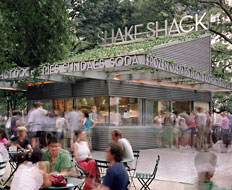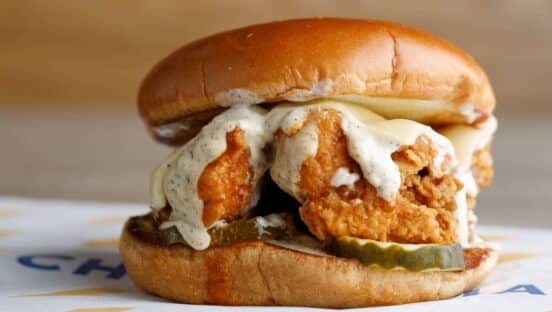One of the most important rules of expansion might not be something operators learn on the job or in any kind of training. It might just be something most of them picked up long ago—usually in grade school during arts and crafts.
“It’s like when you trace things from a pattern and cut them out on construction paper,” says Randy Garutti, COO of New York City’s Shake Shack. “If you trace from the cut-outs you’ve made instead of from the original pattern, it starts looking sloppier and sloppier.” Soon the design gets distorted, and the reproduction starts to resemble the original less and less.
“All too often, restaurants start thinking they must improve their business model, their restaurant’s design, and their menu to be able to expand,” says David Scott Peters, founder of TheRestaurantExpert.com. “While change and improvement is critical to any business, the problem usually lies in changing so much that you change who you are.”
The lesson is especially true for small chains that want to maintain the concept’s culture as it expands to new locations. It’s also one that Shake Shack has taken to heart as it opens new units across the nation and world.
‘The Anti-Chain Chain’
Shake Shack didn't set out to become “the anti-chain,” but that's exactly how many people first got to know it when The New York Times dubbed it that in December 2009.
“We didn’t even set out to be a concept,” Garutti says.
When Shake Shack opened, it wasn’t even Shake Shack at all. It was just a hot dog stand that was part of a public art project designed to rejuvenate Madison Square Park.
“We set out to be a community magnet, and then, being who we are, we said, ‘What can we add to the dialogue on classic roadside stands from the 1950s and 1960s?’” Garutti says.
The stand disposed of the notion that fast food had to be precooked or even prepared quickly in favor of quality ingredients and customer experience. The lines for the hot dogs soon became so long that the city and Union Square Hospitality Group, which had operated the stand, decided to open a bigger facility in the same location in 2004.
“We keep looking at ways we can continue to do three main things: consistently deliver the highest quality, most delicious food; create a place where people love to come together in the neighborhood; and offer great value,” says David Swinghamer, Shake Shack’s CEO.
The concept resonated with the local community so much that long lines with more than an hour wait became standard (an online Shack Cam lets customers view the line before coming to the store). In 2008, the Union Square Hospitality Group opened another location on New York’s Upper West Side near the American Museum of Natural History, and then in 2009 it became one of the highlights for foodies watching a game at the New York Mets’ new stadium, Citi Field.
New openings planned in Miami and Kuwait, along with two in the concept's home base of New York City that are scheduled to open this summer, threaten Shake Shack's status as a community—not a corporate—enterprise. But everything from the concept’s site-selection strategy to its hiring practices is designed to help it maintain its original vision. And the brand’s guidelines can help just about any small brand maintain its identity during expansion.
Tip #1: Go Slow
The Union Square Hospitality Group waited six years before deciding to expand Shake Shack extensively.
“Part of it was simply just finding the right next location,” Garutti says. “Any time we grow, we’re not going to just find an average site. We’re going to find an iconic location.”
According to industry analysts, slow and deliberate growth is almost always a smart move.
“Shake Shack’s commitment to expand only where and when they can do it well is a sign of an organization that truly understands what it takes to make restaurants work,” Peterson says.
Shake Shack’s Garutti likes to think of it another way: The bigger you get, the smaller you need to act. “It’s really easy to make bad decisions as you grow because they’re generally more efficient,” he says.
Instead, Swinghamer says Shake Shack will continue to take its time before opening new locations.
“We feel the rewards far exceed the time and expense to do so,” he says.
Darren Tristano, executive vice president of Technomic, agrees. “They’re looking at this as much more of a slow progression, and I think that always makes more sense,” he says. “It’s better to learn from your mistakes as you’re making them instead of after you’ve made them and you’re closing down units as a result.”
[pagebreak]
Tip #2: Quality Wins
Shake Shack is known for its Black Angus burgers, Vienna all-beef Chicago-style hot dogs, and custard made from premium ice cream. So providing the same product at the same quality in locations like Miami or Kuwait presented an immediate challenge.
“Expansion issues always will include procurement and supply of products,” Garutti says. “Each time we know we want to grow, we’ll sit down with our vendor and say, ‘We want to grow in this fashion. Are you ready to grow with us?’”
When working with its vendors isn’t possible, Shake Shack explores outside options.
“We’ve had to spend a lot of time making sure we source the products from the right purveyors in Miami, or if it was shipped from somewhere else that it wouldn’t lose any of the quality we have,” Swinghamer says. Throughout the process, he works diligently to ensure new vendors are as passionate about quality as Shake Shack and its original vendors are.
“It’s really doing whatever it takes to make sure it happens, even if it means financially in the short run it’s not as advantageous,” Swinghamer says. “It’s understanding that, in the long run, quality wins.”
Tip #3: Connect with the Community
“A common mistake many restaurants make when they expand is to jump around from state to state during expansion,” Peterson says. “This can really hurt them in buying power, product availability, and brand recognition.” Any one of those factors can hurt a concept, but together they can lead to failure. That’s why Shake Shack is extremely careful in its decision to enter new markets.
“We focus first on really understanding it,” Swinghamer says. “We look for a really prime site where we believe that our guests will feel like it’s very identifiable, where we can really express the Shake Shack brand through its architecture and design.”
After researching the market and selecting a site for a future store, Shake Shack then opens up a dialogue with the community.
Take a location in the Manhattan neighborhood of Nolita, for example, where a few outspoken locals started protesting the store’s opening. After a couple of meetings with the community, Shake Shack decided not to proceed with the Nolita plans.
“We looked at that situation and said, ‘That’s not something we have to fight against,’” Garutti says. “We want them to be thrilled they’re getting one, and obviously that’s not the case here. There are plenty of other places to go, so why would we go to this site?”
Another key part of the dialogue involves an exploration of how Shake Shack can “regionalize” each store, both through creative architecture inspired by the surroundings and through special menu offerings.
“We do it mostly through our custard flavors,” Garutti says. “The mix-ins in our concretes”—dense milkshake-like creations blended with different toppings—“are often related to the neighborhood.” The Miami store’s menu, for example, will offer a concrete with key lime pie from a nearby bakery in it. Local beers or specials also help integrate the store into the community.
“By bringing in some of that local flavor and regional appeal, I think people feel much more comfortable,” Technomic’s Tristano says. “They don’t feel they’re at a restaurant that’s the same everywhere. … It creates something that’s unique that you can’t get anywhere else.”
Tip #4: Communicate Core Values
Despite slight tweaks to the menu and store design at each location, Shake Shack executives want to keep the brand as consistent as possible as it expands.
That’s why the director of operations for Miami spent two months training at the original location in Madison Square Park before he could set foot in his own store. His entire management team also was required to spend between two and four weeks working at the first location.
“If you’re a manager working anywhere for us, you have to go spend some time in the original Shack to understand it,” Garutti says. “That allows you to take the foundation of what we do and translate it to where you are.”
Tristano says the strategy is one that any concept could—and should—use to stay focused on where its success came from.
“It’s important to get a flavor of what it’s all about from the original,” he says. “You could go to Prague and see a mini Eiffel Tower, but until you go to Paris, you haven’t seen the real thing.”
[pagebreak]
Similarly, Tristano recommends staying true to the menu items, dayparts, and price points to which customers have typically responded well.
“Remember what made it great at the beginning,” Garutti says. “Always look back and make sure you’re still doing that.”
Tip #5: Pick the Right People
With any concept, staff help define the customer experience. But in brands looking to maintain a small-chain feel, this becomes especially important.
“We start with the general manager,” Garutti says. “We then work with them to build a team, and that’s a balance of people already in the company looking to grow and people outside the company who are new.”
Just as with all other aspects of the expansion process, Shake Shack makes sure not to rush anything, including the hiring of hourly workers.
“It’s easy to shop while you’re hungry, but you can’t do that,” Garutti says. “You have to take your time to really get to know people and make sure they’re right for your culture.”
For Shake Shack, that means finding people who have an innate sense of hospitality and customer service.
“We can teach them how to make a great shake, but we can’t teach them to be great human beings,” Garutti says. “All we’re really looking for is a genuine sincere sense of hospitality. If that exists, there’s a spot on our team for you.”
Once a store’s crew is in place, Shake Shack makes an effort to keep them happy and motivated.
In addition to paying higher-than-average wages, the company has a program called Shack Dollars through which it gives the hourly team 1 percent of sales off the top line every day.
“We wanted to say ‘thank you’ and ‘we’re all in this together,’” Garutti says.
That way the whole crew is invested in the store’s success and Shake Shack attracts employees who are happy—not annoyed—when the store is busy.
“They’re managing against the human elements,” Tristano says. “It’s probably the best way to enhance your brand without increasing your cost.”
Up Next
Shake Shack executives talk about future plans less in terms of numbers or specific markets and more in terms of the experience it wants to spread to new customers.
“It’s not our intention to open hundreds of Shake Shacks a year,” Garutti says. “When a Shake Shack is coming to town, we want people to say, ‘Wow, we’re getting a Shake Shack in our neighborhood!’ There are few brands out there where people have that reaction. That’s what we’ve been able to do so far, and we want to continue doing that.”










